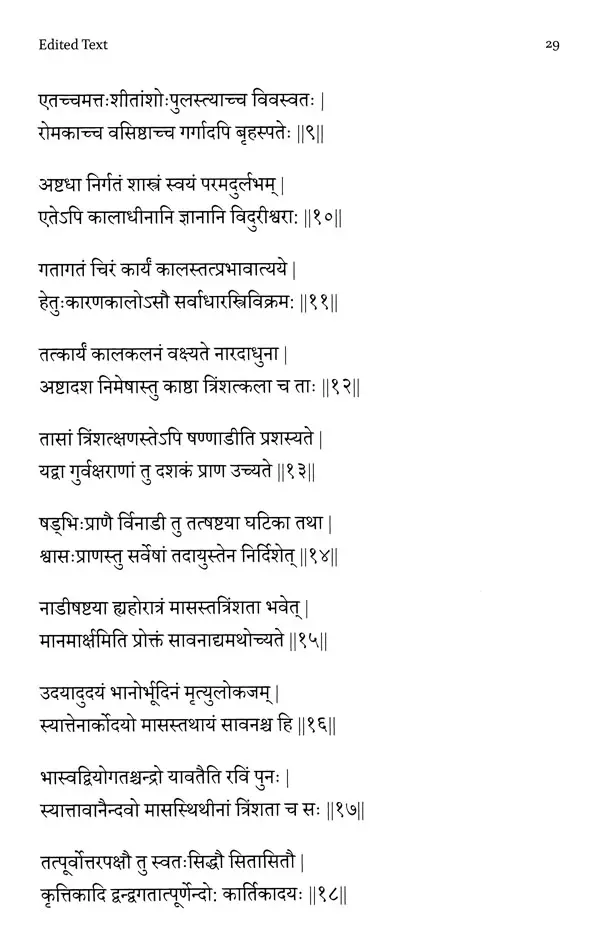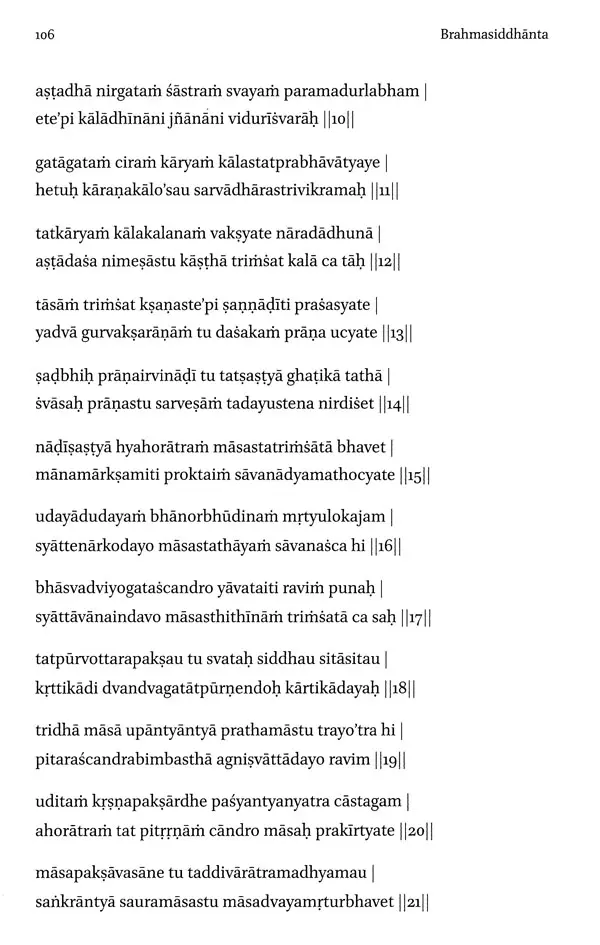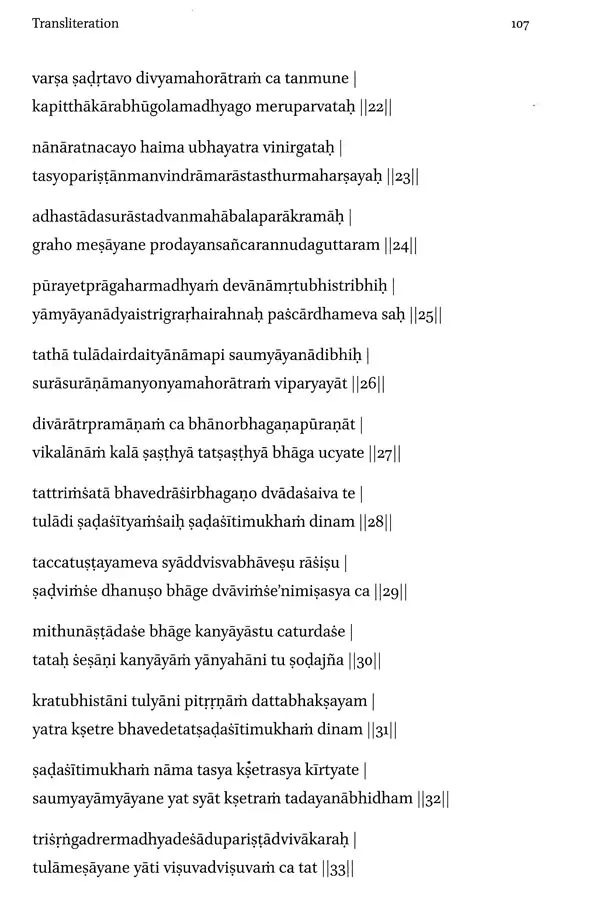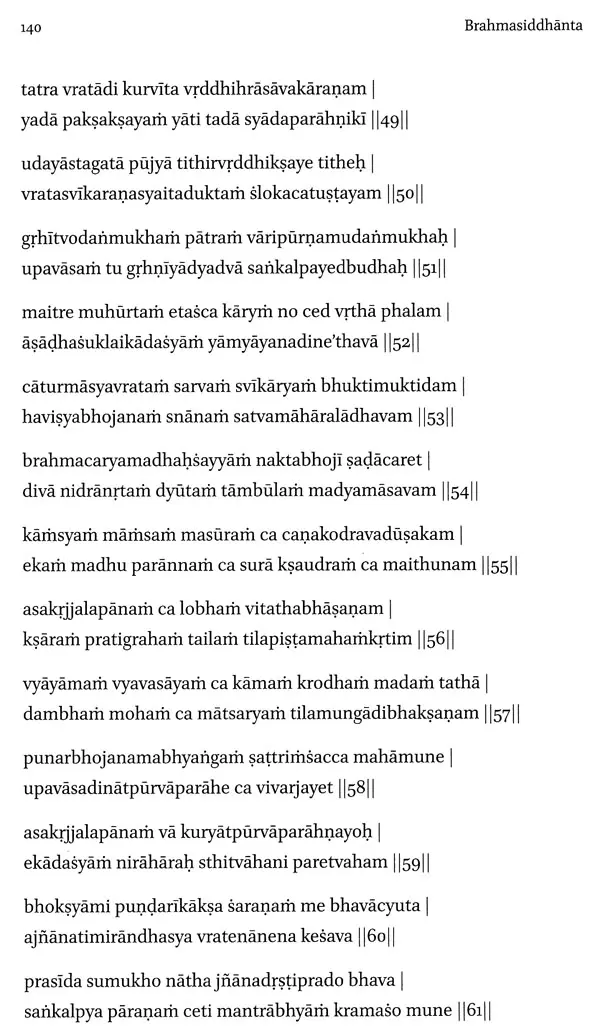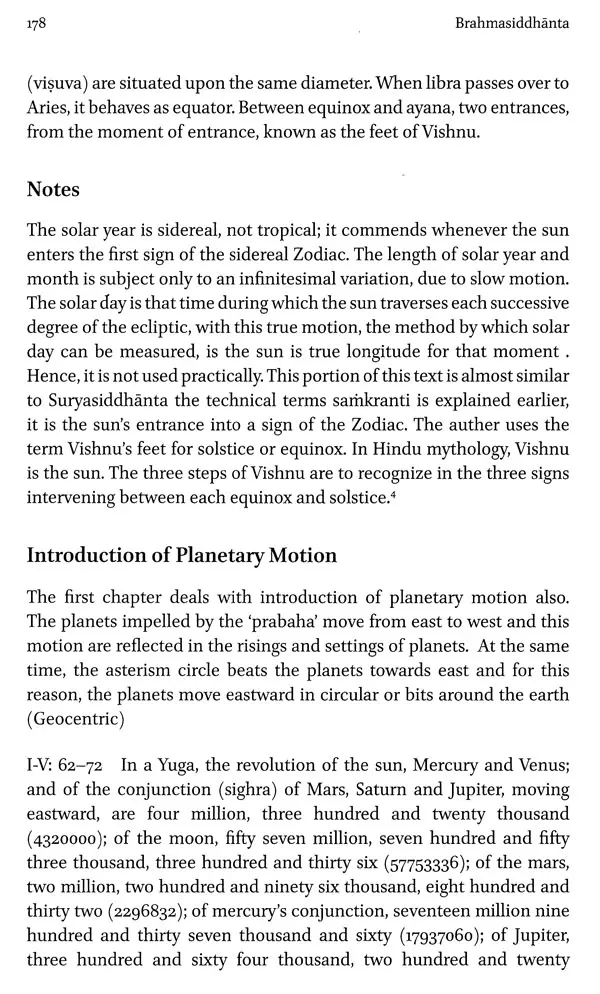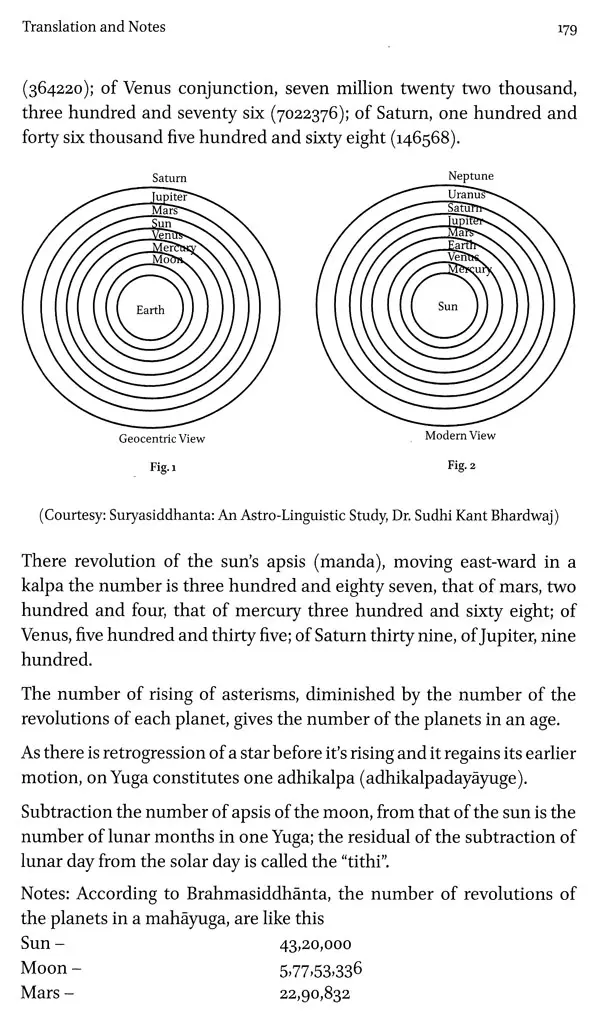
ब्रह्मसिद्धान्तः शाकल्यसंहितोक्तः (मूलग्रन्थ- लिप्यन्तर- टीका- आंगलव्याख्यासहितः)- Brahmasiddhanta in Sakalyasamhita (Critically Edited text, Transliteration, Notes and Explanation in English)
Book Specification
| Item Code: | UAQ184 |
| Author: | Somenath Chatterjee |
| Publisher: | National Mission For Manuscripts |
| Language: | Sanskrit Text with English Transliteration |
| Edition: | 2019 |
| ISBN: | 9789380829647 |
| Pages: | 231 |
| Cover: | HARDCOVER |
| Other Details | 10.00 X 7.00 inch |
| Weight | 600 gm |
Book Description
This edited volume is an important text of ninth century India. From Paitamaha Siddhanta, siddhantic age began and it continued up to Siddhanta Sundara of Jnanraja of 14 century CE. Before compilation of Brahmasiddhanta in Šakalyasamhită a series of astronomical texts had been published, like Aryabhatiya, Laghu Bhaskariya. Maha Bhaskariya, Brahmasphutasiddhanta etc. Brahmasiddhanta in Sakalyasamhita contains all the contemporary astronomical knowledge of India. Any reader having preliminary knowledge on astronomy can understand the contents of this volume. Peculiarities of this book are-
Chapter division is not in the conventional way,
b. Manuscripts do not show the name of the chapters;
c. Name of the compiler was found at the end of the chapter,
This book contains eight chapters and 764 verses in which third chapter contains ritual time measurements, effect of religious rituals etc. This compilation was noticed by eminent figures like SB Dikshit, David Pingree and many others.
The editor is an independent researcher of history and philosophy of Indian science. He is associated with many learned societies. Beside his teaching profession he is continuing his research since nineties of last century. As a project investigator he completed two projects with Indian National Science Academy, New Delhi. He has attended a number of national and international conferences and his papers on Indian astronomy have been highly appreciated and published in various reputed journals.
The concept of Astronomy can be traced back to Vedic literature. Vedänga Jyotisa, dated 1370 B.C. is considered to be the first compiled astronomical text in India. Thereafter, as the Greek knowledge of astronomy evolved in the West, in the East, India was proceeding in its own way. During the second half of the first century, when Paitamaha Siddhanta was being compiled, a considerable amount of progress had already been made in the field of astronomy.
David Pingree, in the later half of twentieth century had made considerable contribution by discovering astronomy related manuscripts from various libraries in India and abroad.
Brahmasiddhanta in Šakalyasamhita is one such work which contains many astronomical references that were first noticed by Dikshit, Pingree, Jñanaraja and others. This work was compiled in ninth century A.D. and the layout of this particular text was not similar to other astronomical texts of the Siddhantic era. The work, as the part of a Samhita, not only dealt with religious rituals, similar to other Samhitas but additionally also included details of timing of the religious rituals based on positions of the Sun, Moon and the Stars. Thus the contemporary astronomical knowledge has been reflected over the whole text.
Shri Somenath Chatterjee, an ardent researcher of science and astronomy, while preparing the critical edition of this text, has aimed to explain those verses which are related to astronomy. The scholar has also transliterated the text in Roman script. The work contains English translation with explanatory notes. Shri Chatterjee has done a commendable job by explaining the concept of some of the verses with diagrams. The technical terms given in the appendix are important to initiate the understanding of Indian astronomy.
The Brahmasiddhanta in Sakalyasamhita is one of the important astronomical works compiled in 9th century AD noticed by Kamalakara Bhatta and many famous historians of science like Thibaut, Pingree etc. This work belongs to the school of Suryasiddhanta but has its own characteristics. This text has six chapters and 764 verses. This was described by Brahma to Narada. The original verses nowhere mention the name of Sakalya but at the end of each chapter, the concluding line is the notice of the second problem (ditiye prašne) of the Brahmasiddhanta in Sakalyasamhita. It covers all important subjects of astronomy like time measurement, position of planets, risings and settings of planets, eclipses, etc.
Brahmasiddhanta in Saklyasamhita was first published in Jyatisasiddhäntasamgraha edited by Pt. Vidhyeśvari Prasad Dvivedi in Benaras Sanskrit Series 152 (1912 AD). This text is in the form of dialogue between Brahma and Narada. The copies of the manuscript are preserved in Bhanderkar Oriental Reasearch Institute, Pune; The Asiatic Society, Kolkata; Government Oriental Manuscripts Library, Madras. According to S. B. Dikshit, this text was compiled not before first half of 9th century AD.
This project was initially supported by Indian National Science Academy, New Delhi. I am grateful to Indian National History of Science Commission for this research-project. The critical edition of Brahmasiddhanta in Sakalyasamhita along with notes and explanations prepared by me has been considered for publication by the National Mission for Manuscripts. My sincere thanks goes to the Competent Authority of the Mission for bringing out the work. My heartfelt gratitude goes to my respected teacher Dr. A. K. Bag, the Editor of Indian Journal of History of Science for his inspiration and guidance all throughout my research work. I thank Mr Madhavendra Narayan, Associate Editor of IJHS and Prof. Nikhilesh Chakraborty, Former Professor of Jadavpur University for their help whenever I needed it while working on the project.
Brahmasiddhanta in Sakalyasamhita belongs to the school of modern Suryasiddhanta. S B Dikshit noticed five modern siddhantas which are divine in character, Suryasiddhanta, Somasiddhanta, Vasisthasiddhanta, Romasasiddhanta and Brahmasiddhanta in Šakalyasamhita. The elements given by these five modern pañcasiddhantika are almost same as, revolution of stars, savana days, revolution of the moon, revolution of Mercury etc. Actually the astronomical works of India belong to three main schools (paksas); the Saurapakṣa, the Aryapaksa and the Brahmapaksa. The basic works of the first school is Suryasiddhanta which is followed by many astronomers as this present work. The reason for this formation of the three different schools is that the length of the year according to each school is somewhat different and the motions of planets in a particular period of time are different. This present text follows the Suryasiddhanta in these two cases.
Book's Contents and Sample Pages



